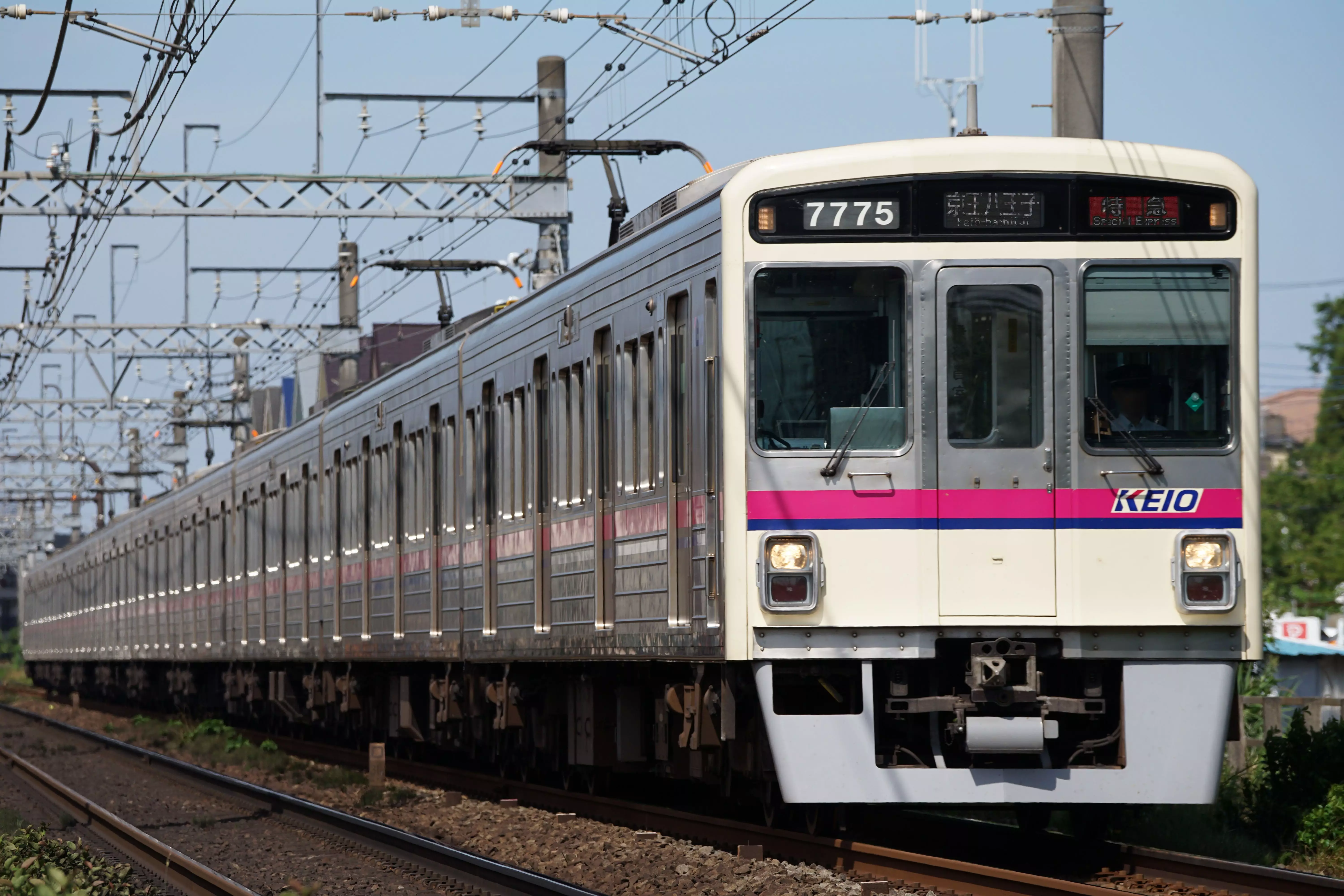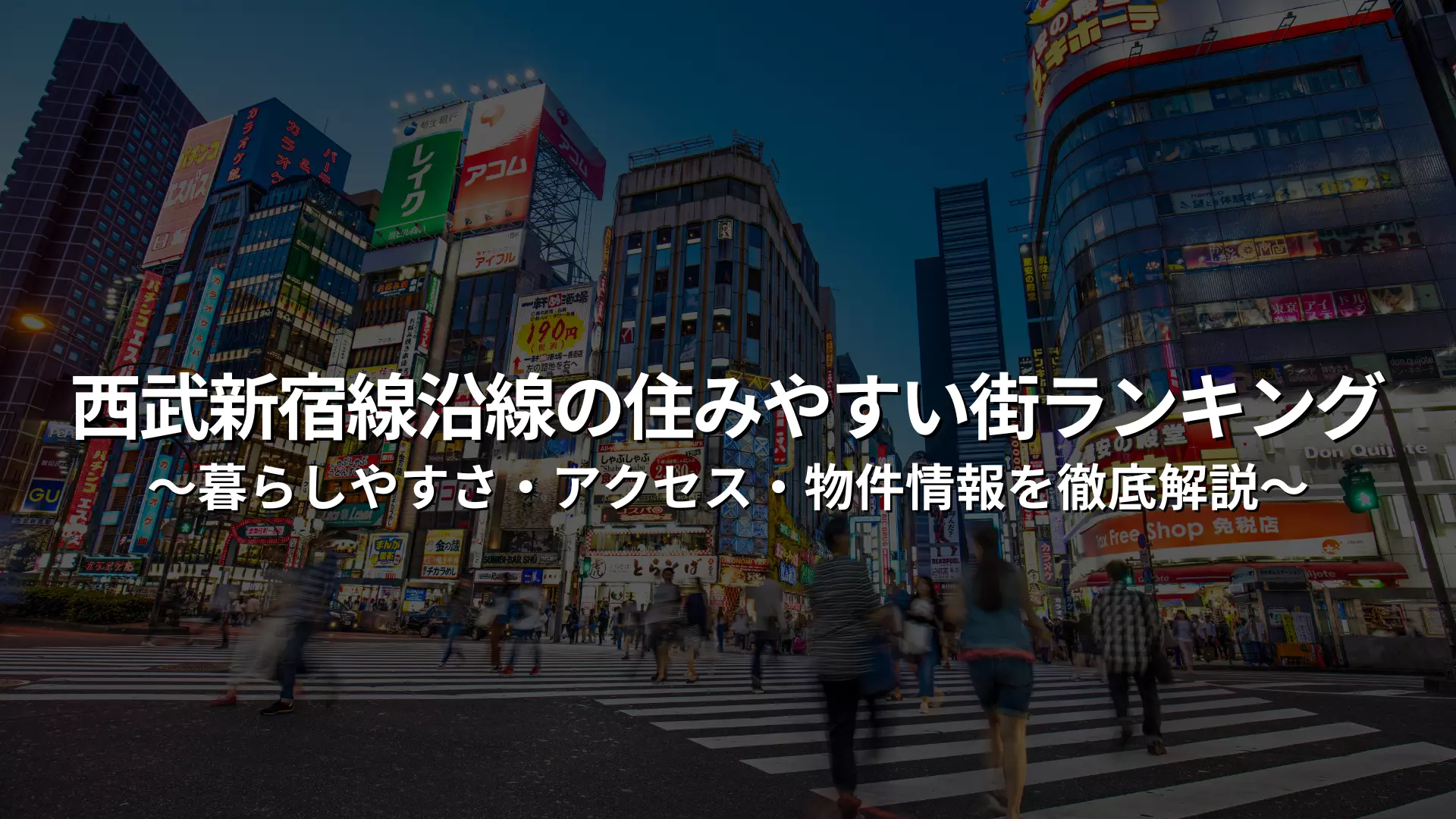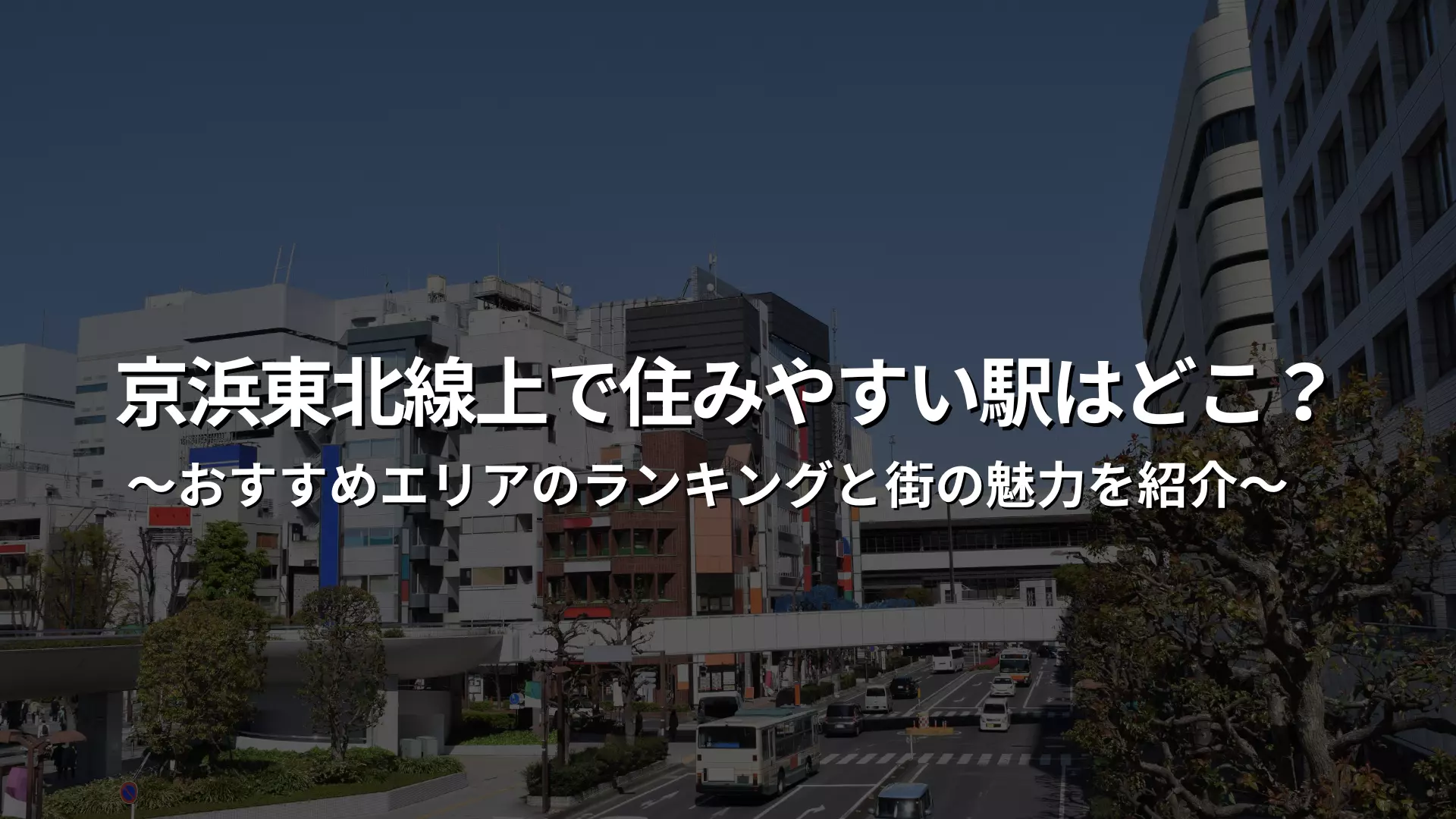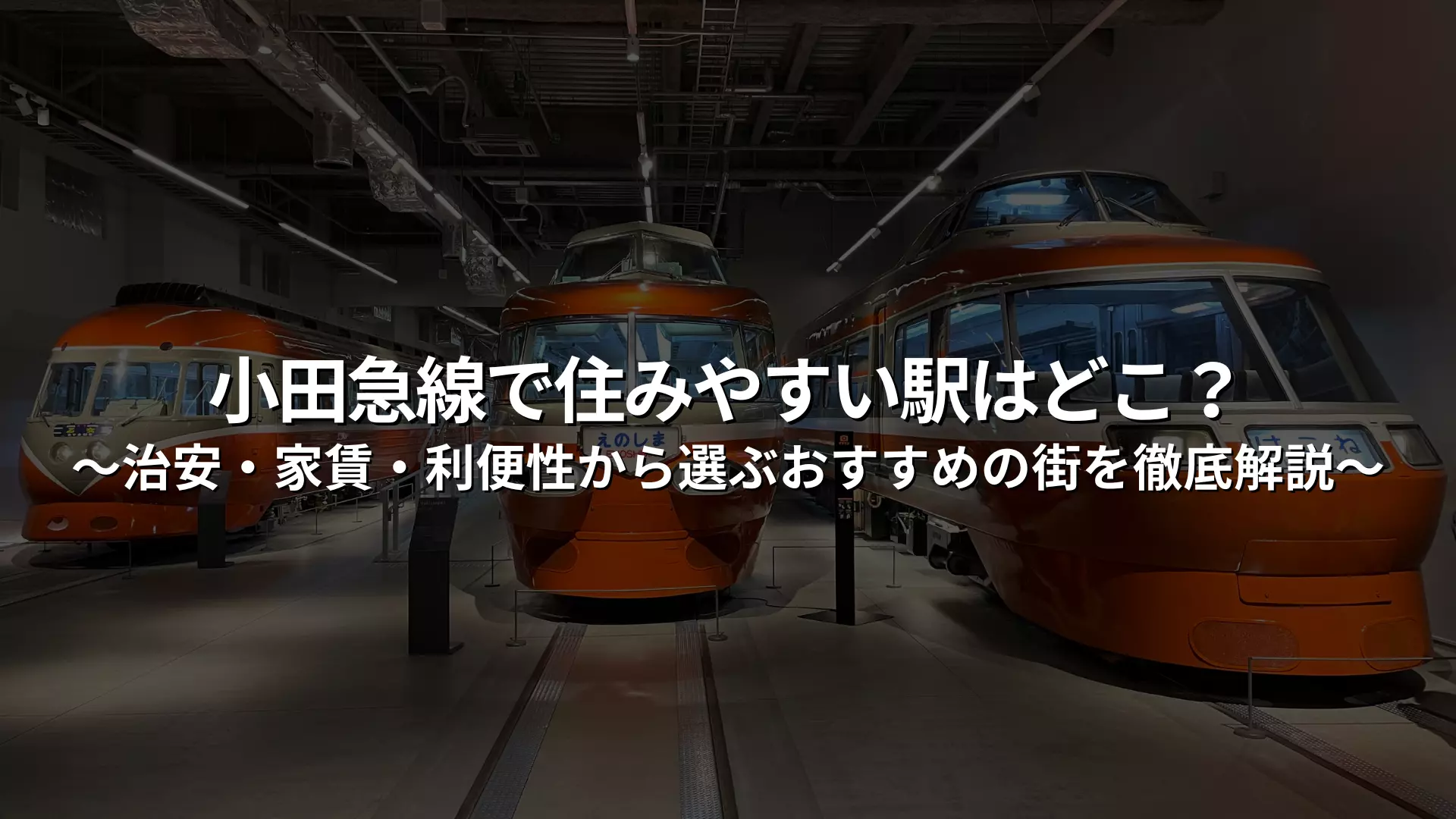Features of the Keio Line
The Keio Line runs from Keio Hachioji Station to Shinjuku Station.
The Keio Line runs from Keio Hachioji Station in Hachioji City to Shinjuku Station in Shinjuku Ward.
There are five types of trains on the Keio Line: local trains, rapid trains, express trains, limited express trains, and limited express trains. Major stations include Sasazuka, Meidaimae, Chitose-Karasuyama, Chofu, and Fuchu, and limited express trains stop at these major stations.
Because there are express trains, it is easy to commute to work or school even from stations far from Shinjuku. Incidentally, Meidaimae Station, where Cross House properties are located, can be reached from Shinjuku in 7 minutes. In addition, the Keio Inokashira Line, which can take you to Shibuya and Kichijoji Station in one train, runs through the station, making it a very popular station for students and working adults.
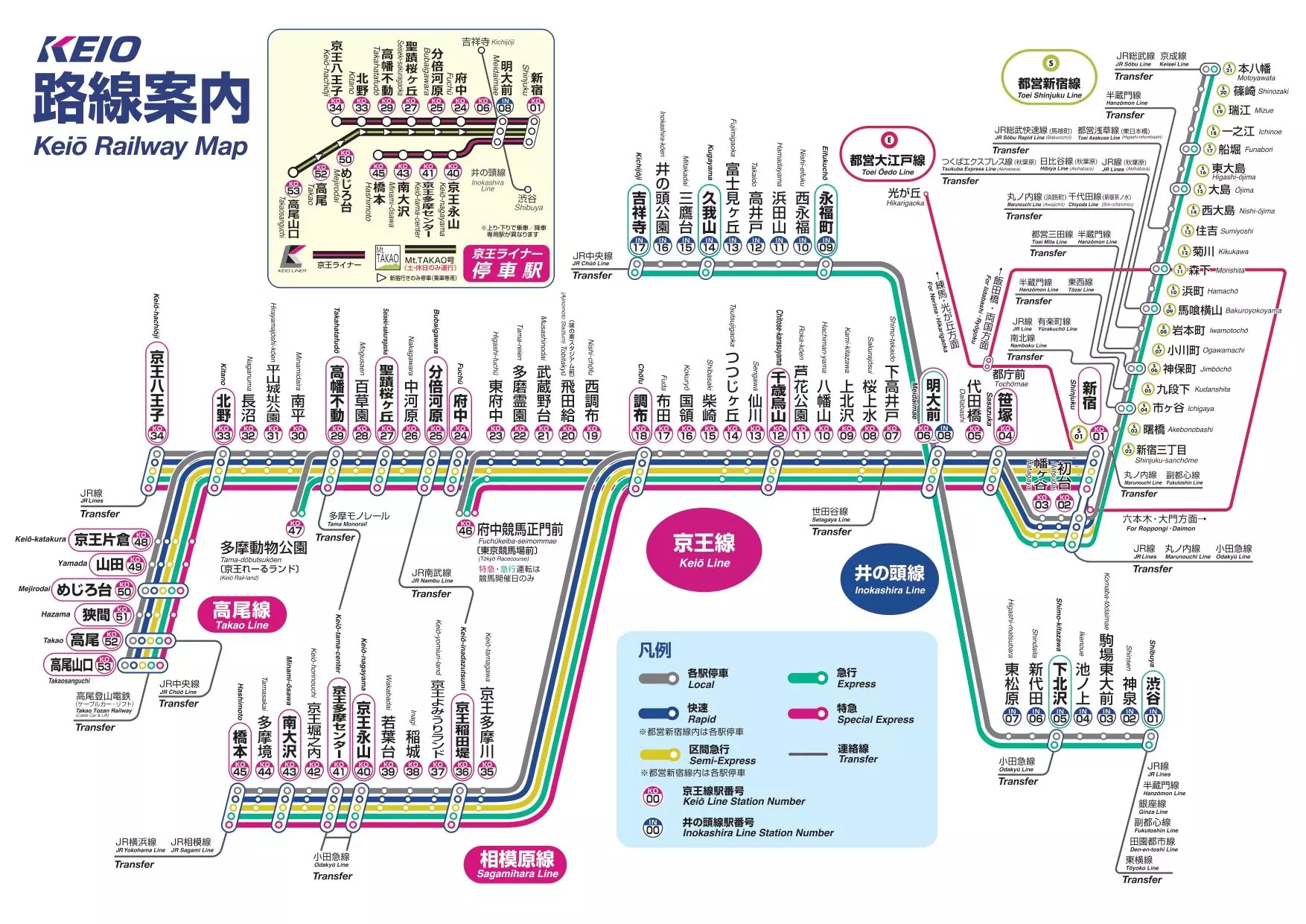
Recommended points of the Keio Line
point | ● Wide variety of express trains ● Fares are cheaper than JR and subways ● The Keio Line is peaceful and away from the hustle and bustle of the city. ● "Sasazuka Station" where you can enjoy shopping, "Meidaimae Station" which is popular among students, "Chitose-Karasuyama Station" with plenty of restaurants |
|---|
The Keio Line has five types of trains: local trains, rapid trains, express trains, limited express trains, and limited express trains, making it easy to commute to work or school even if your station is a little far from Shinjuku.
Another attractive feature is the cheaper fares compared to JR and private railways. Living in Tokyo can be expensive just in terms of transportation costs, so it is recommended to live on a line with cheaper fares. In fact, the fare from Hachioji Station to Shinjuku on the JR line is 492 yen one way, but from Hachioji Station to Shinjuku on the Keio line it is 367 yen.
The Keio Line is a quiet area, far from the hustle and bustle of the city, even at Sasazuka Station, the next station from Shinjuku. This line is recommended for people who want to live in a quiet place.
Each station on the Keio Line has its own unique charm. Sasazuka Station is one stop away from Shinjuku, and is conveniently located, just five minutes away. Recently, the area around the station has been developed, and there are now many shopping malls and restaurants directly connected to the station. There is also a shopping street nearby, with unique shops and popular cafes and restaurants, making it a very comfortable place to live.
Transfer route along the Keio Line
From each station along the Keio Line, you can transfer to many different lines, making it convenient to access many different destinations.
| Available routes | Main station accessible by bus | |
|---|---|---|
Shinjuku Station | ・Keio Line, Yamanote Line, Saikyo Line, Chuo Line, Shonan Shinjuku Line, Odakyu Line, Marunouchi Line, Toei Oedo Line, Toei Shinjuku Line, Keio New Line | ・Shinjuku Station, Ikebukuro Station, Shibuya Station, Shinagawa Station, Waseda Station, Yoyogi Park Station, Ogikubo Station, Kichijoji Station, Kojimachi Station, Oji Station, Oji Kamiya Station |
Sasazuka Station | ・Keio Line/Keio New Line | ・Shinjuku Station, Shibuya Station, Nakano Station, Asagaya Station, Kichijoji Station, Shin-Koenji Station, Honancho Station, Yoyogi-Uehara Station, Yoyogi-Koen Station, Higashi-Kitazawa Station |
Daitabashi Station | ・Keio Line | ・Shinjuku Station, Shibuya Station, Nakano Station, Asagaya Station, Kichijoji Station, Nakano-sakaue Station, Eifukucho Station, Yoyogi-Uehara Station, Yoyogi-Koen Station |
Meidaimae Station | ・Keio Line/Keio Inokashira Line | ・Shinjuku Station ・Nakano-sakaue Station ・Eifukucho Station ・Kichijoji Station ・Sakurajosui Station ・Higashi-Koenji Station ・Honancho Station |
Shimotakaido Station | ・Keio Line ・Tokyu Setagaya Line | ・Kamikitazawa Station ・Sakurajosui Station ・Hamadayama Station |
Sakurajosui Station | ・Keio Line | ・Kamikitazawa Station ・Shimotakaido Station ・Hamadayama Station |
Kamikitazawa Station | ・Keio Line | ・Sakurajosui Station ・Shimotakaido Station ・Hachimanyama Station ・Hamadayama Station |
Yawatayama Station | ・Keio Line | ・Ogikubo Station ・Kamikitazawa Station ・Kyoto Station |
Ashikaga Park Station | ・Keio Line | ・Ogikubo Station ・Seijo Gakuenmae Station |
Chitose Karasuyama Station | ・Keio Line | ・Ogikubo Station ・Kamikitazawa Station ・Kichijoji Station ・Seijo Gakuenmae Station ・Chitose-Funabashi Station ・Tsutsujigaoka Station |
(Source: NAVITIME )
Search for properties on the Keio Line
Average rent for Keio Line stations
Average rent for single people on the Keio Line
Comparison of rent between regular rental property and Cross House share house
point | [General rental property along the Keio Line] Monthly fee: 93,000 yen to 143,000 yen *The fee includes the average utility costs, internet fees, and equipment purchase costs for a single person. [Cross House] Monthly fee: 39,800 yen to 78,000 yen *The fee includes utility fees, internet fees, and equipment purchase fees. |
|---|
When looking for a regular rental property, people tend to forget that in addition to rent, they also have to pay for utilities, internet, and daily necessities. When you add these up, the average cost of living alone is about 20,000 yen.
Therefore, if you are looking for a room for general rental, be sure to expect to pay an additional 20,000 yen on top of the rent.
On the other hand, at Cross House, the rent (including common area fees) includes water, electricity, and gas charges.
In addition, furniture and appliances are provided, as well as toilet paper, hand soap, and other amenities, so there is no need to purchase any daily necessities. WiFi is also provided free of charge, so there is no need to sign up for an internet contract separately.
Standard rental price | Standard rental price + Utilities, internet, and living expenses | Cross House Share House + Utilities, internet, and living expenses | |
|---|---|---|---|
| Shinjuku | 123,000 yen | 143,000 yen | From 39,800 yen |
| Hatsudai | 107,000 yen | 127,000 yen | From 78,000 yen |
| Hatagaya | 91,000 yen | 111,000 yen | - |
| Sasazuka | 97,000 yen | 117,000 yen | From 67,000 yen |
| Daita Bridge | 84,000 yen | 104,000 yen | From 59,800 yen |
| Meiji University Front | 81,000 yen | 101,000 yen | From 70,000 yen |
| Shimotakaido | 75,000 yen | 95,000 yen | From 63,000 yen |
| Sakurajosui | 74,000 yen | 94,000 yen | From 57,000 yen |
| Kamikitazawa | 80,000 yen | 100,000 yen | From 57,000 yen |
| Yawatayama | 73,000 yen | 93,000 yen | From 57,000 yen |
| Ashikaga Park | 73,000 yen | 93,000 yen | From 61,000 yen |
| Chitose Karasuyama | 75,000 yen | 95,000 yen | From 57,000 yen |
(Source: LIFULL HOME'S )
Search for properties on the Keio Line
Average initial costs for living alone
Comparison of initial costs between regular rental and Cross House sharehouse
point | [Initial costs for general rental property] It is generally said that the cost is 4 to 5 months' rent. [Initial costs for a Cross House share house] The initial fee is a flat rate of 30,000 yen |
|---|
It is generally said that the initial costs incurred when signing a lease for a room are equivalent to 4 to 5 months' rent.
The initial costs mainly consist of the deposit, key money, agency fee, key exchange fee, fire insurance fee, etc. In addition, there will be the cost of purchasing furniture and appliances, as well as daily necessities that you will want to have ready at the beginning (toilet paper, hand soap, etc.).
Let's say you rent a room for 80,000 yen a month. If you consider that the initial costs will be 4 to 5 months' rent, then the initial costs will be a minimum of 320,000 yen.
In comparison, the initial cost of a Cross House share house is a flat 30,000 yen regardless of the rent. Also, furniture, appliances and daily necessities are provided, so there is no need to purchase them!
In addition, there are some properties currently running a campaign where the initial cost of 30,000 yen is waived, so this is recommended for those who want to keep initial costs down.
Initial costs for general rental property (example: rent is 80,000 yen) | Cross House initial costs (for share house) | |
|---|---|---|
| Deposit | 80,000 yen (1-2 months rent) | 0 Yen |
| key money | 80,000 yen (1-2 months rent) | 0 Yen |
| Brokerage fee | 88,000 yen (one month's rent + consumption tax) | 0 Yen |
| First rent | From 80,000 yen (pro rata for the contract month + the following month) | 0 Yen |
| Guarantor company initial guarantee fee | From 40,000 yen (0.5 to 1 month's rent) | 0 Yen |
| Fire insurance premiums | From 4,000 yen (4,000 to 10,000 yen per year) | 0 Yen |
| Key exchange fee | 10,000 to 20,000 yen | 0 Yen |
| Cleaning costs | 10,000 to 20,000 yen | 0 Yen |
| Purchase cost of furniture and appliances | Approximately 100,000 yen | 0 Yen |
| Cost of purchasing equipment for a new life | Approximately 20,000 yen | 0 Yen |
| total | From about 512,000 yen | 30,000 yen + first rent |
Average moving-out costs for single-person living
Comparison of moving-out costs between regular rental property and Cross House share house
The average cost of moving out of a general rental property varies depending on the size and layout of the property. The table below shows the average cost of moving out by layout. However, this can vary considerably depending on circumstances such as the number of years of residence and the degree of repairs, so please use this as a guide only.
Floor plan | Average moving-out costs for regular rental properties |
|---|---|
Studio, 1K, 1DK, 1LDK | 49,980 yen |
2K, 2DK, 2LDK | 79,924 yen |
3DK, 3LDK, 4K, 4DK, 4LDK | 90,139 yen |
(Source: "Atom-kun" )
On the other hand, in the case of Cross House shared houses, the moving-out fee is set at a flat rate of 15,000 yen (excluding tax).Cross House Share House | |
|---|---|
Moving out costs | 15,000 yen flat rate |
With Cross House, you can reduce your initial costs and move-out costs compared to regular rental properties.
Even when considering the total costs from moving in to moving out, it is cheaper than a regular rental property, so it is recommended for those who are thinking about living alone for the first time!

